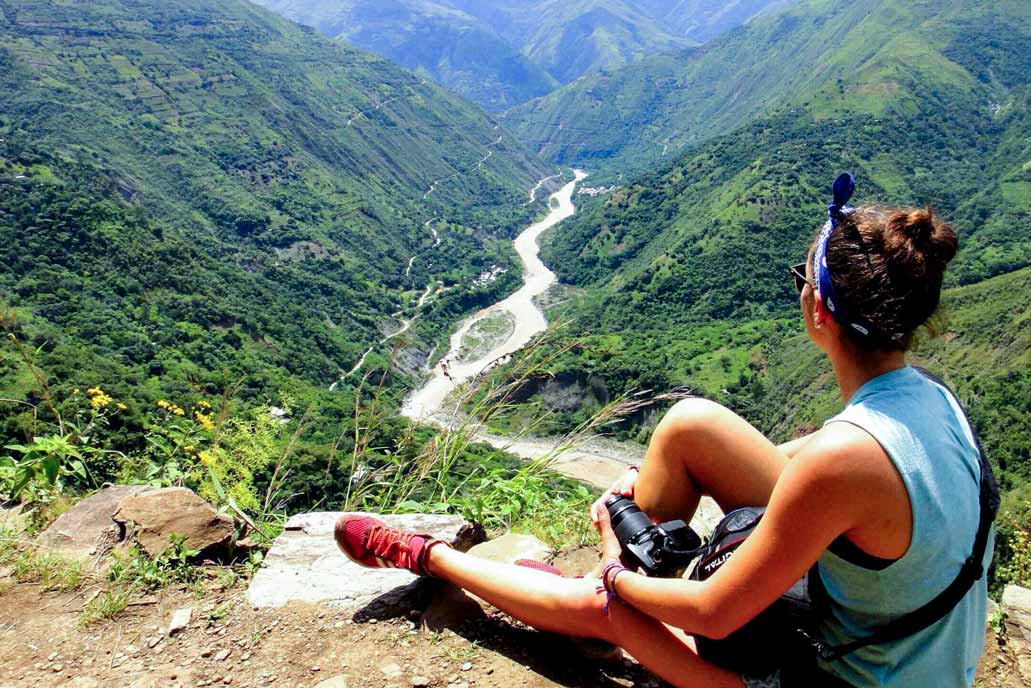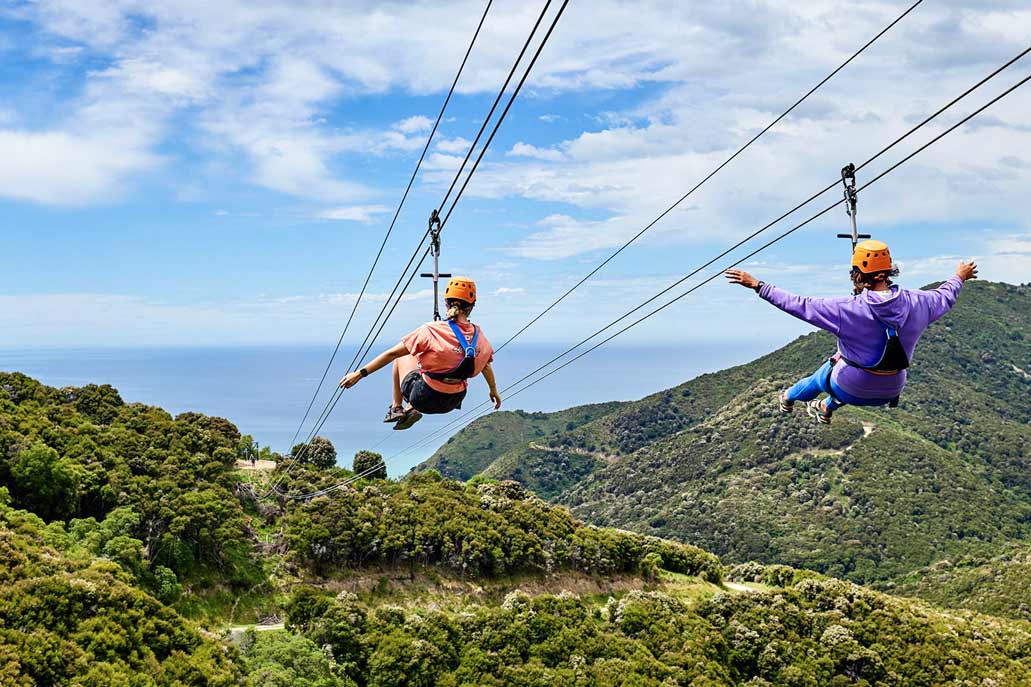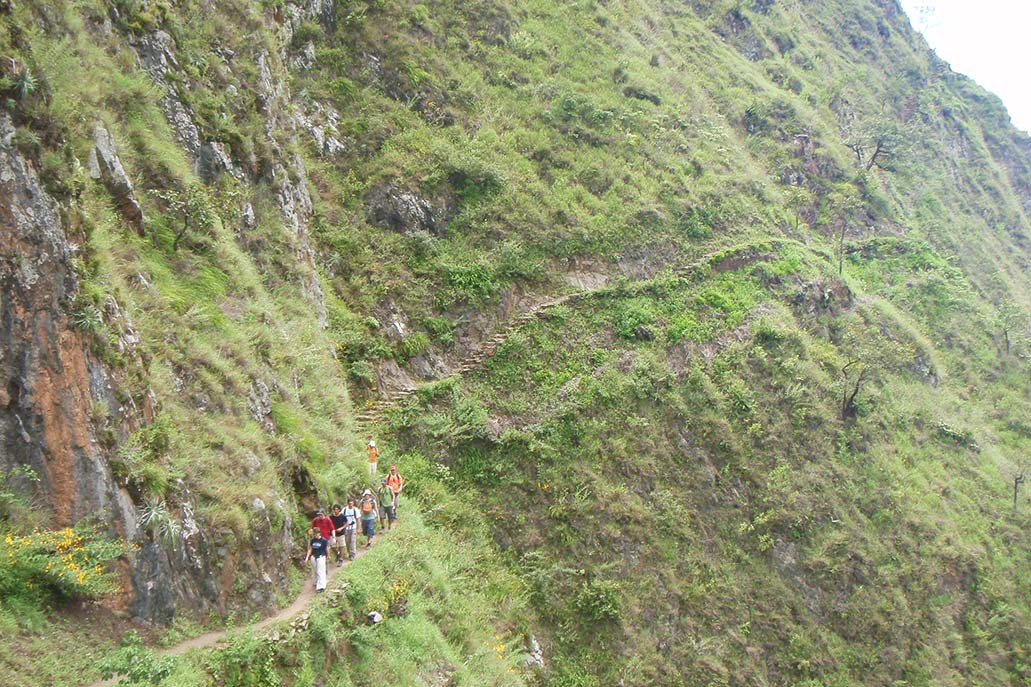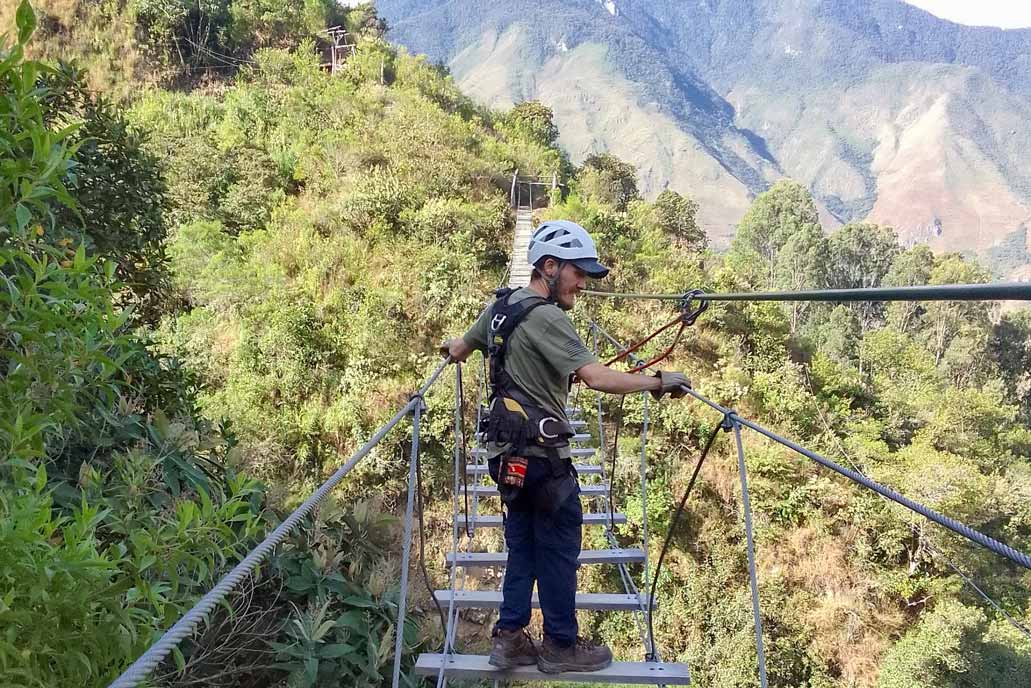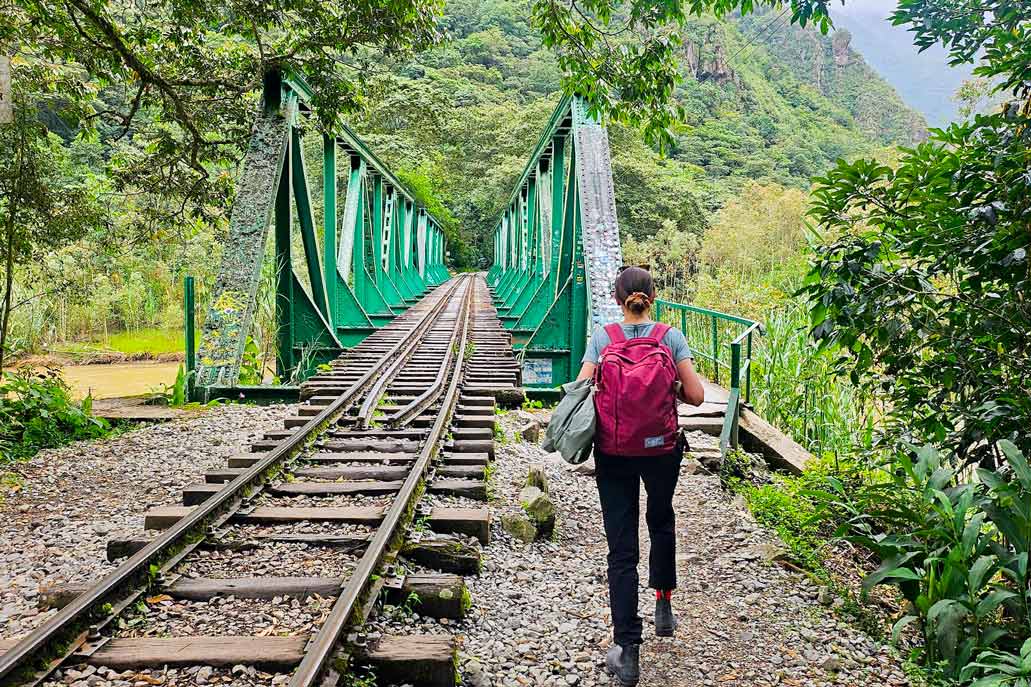Inca Jungle to Machu Picchu? This is this adventure route step by step
Have you ever imagined reaching Machu Picchu by biking, hiking, rafting, and ziplining? The Inca Jungle is no ordinary route; it’s a combination of adventure, nature, and excitement at every turn. In this blog, we tell you step by step what this little-known route is like, what you need to know before starting, and why so many travelers choose it as an alternative to the classic Inca Trail.
Content
General information
What is the Inca Jungle tour?
The Inca Jungle is an alternative route to Machu Picchu, ideal for those seeking adventure and a variety of activities. Unlike the traditional Inca Trail, this route combines biking, hiking, ziplining, and rafting, passing through high jungle landscapes, little-known Inca trails, and charming Andean villages.
This is a recommended option for young travelers or those with an adventurous spirit who want to explore the region in a different way. It generally lasts four days and three nights and offers a more dynamic experience, with fewer permit requirements and greater availability throughout the year.
What does the Inca Jungle route include?
Most Inca Jungle tours include transportation from Cusco, mountain biking, rafting (weather permitting), basic accommodations, meals throughout the tour, professional guides, and admission to Machu Picchu. Some packages also offer the option to climb Huayna Picchu or Machu Picchu Mountain.
In addition to access to various adventure activities, the tour usually covers the train or bus return to Cusco from Aguas Calientes. It’s important to check each tour operator’s coverage, as some services, such as ziplining or hot springs admission, may have an additional cost.
Tips for preparing the Inca Jungle
What to bring to the Inca Jungle?
For the Inca Jungle, it’s recommended to wear light, comfortable clothing for walking, but also something warm for the nights, as they can be chilly. You shouldn’t forget to pack good trekking shoes, waterproof if possible, as well as a rain poncho, insect repellent, and sunscreen.
It’s also helpful to bring a small backpack for daily walks, a reusable water bottle, sunglasses, a hat, a swimsuit (for hot springs), and personal hygiene items. It’s best to avoid urban clothing, makeup, or unnecessary items that only add weight.
Do I need to be in good physical condition?
It’s not necessary to be a professional athlete, but moderate physical fitness is recommended. The tour includes several hours of hiking, biking, and, in some cases, adventure activities that require a certain level of physical endurance.
If you exercise regularly and are used to walking, you shouldn’t have any problems. In any case, it’s a good idea to acclimatize in Cusco at least a day or two beforehand, so your body can adjust to the altitude and avoid discomfort during the hike.
This route combines several types of activities (biking, hiking, rafting, and canopy), so carrying extra weight will only tire you out. Avoid urban clothing, inappropriate footwear, or unnecessary items like makeup. Prioritize sportswear, a light raincoat, and good trekking shoes.
Tips to avoid altitude sickness
Altitude sickness, or “soroche,” can affect those unaccustomed to altitude, especially upon arrival in Cusco. To reduce the risk, it’s recommended to rest upon arrival, avoid heavy meals on the first day, and drink plenty of water. Coca tea also helps relieve symptoms.
Taking altitude sickness pills (such as sorojchi pills) before the trip can be helpful. It’s also advisable to avoid physical exertion on the first day and get plenty of sleep. If symptoms are severe (severe headache, vomiting, difficulty breathing), seek medical attention immediately.
Best time to do the Inca Jungle
Can the Inca Jungle be done all year round?
Yes, the Inca Jungle tour can be done year-round, but conditions vary depending on the season. Many travelers prefer to do it between April and October, when there is less rain and the trails are more stable, making activities like biking and hiking easier.
During the rainy season (November through March), some areas may become slippery, and certain activities such as rafting or ziplining may be suspended for safety reasons. However, many operators continue to offer tours, adapting the itinerary if necessary. The important thing is to be well informed before booking.
Inca Jungle in the dry season vs. the rainy season
During the dry season (April to October), the weather is more stable, the skies are usually clear, and the trails are in good condition. This allows for better views, and adventure activities are more common. This is the most recommended time of year, although it is also the busiest.
During the rainy season (November to March), the landscape is greener and there are fewer tourists, which can be a plus for those seeking tranquility. However, rain can affect the route, especially on hiking or biking sections. If you decide to go during these months, bring good waterproof gear and be prepared for possible changes to your itinerary.
Weather and temperature along the route
The Inca Jungle passes through different ecological zones, so the climate varies depending on the route. At the beginning, in high altitudes like Abra Málaga, it can be quite cold, with temperatures between 5 and 10°C, especially in the mornings. In contrast, in the high altitude jungle, the climate is warmer and more humid, with daytime temperatures ranging from 20 to 30°C.
Nights can be cold, especially at the first camps. During the day, the sun can be strong, so it’s essential to bring sunscreen, a hat, and light clothing. It’s also important to have warm clothing for the evening and be prepared for rain at any time of year, although it’s most common between November and March.
Prices and tour options
How much does the Inca Jungle tour cost?
The price of the Inca Jungle tour varies depending on the agency, the season, and the services included. On average, a 4-day, 3-night tour package costs between $200 and $400 per person. This price typically covers transportation, a guide, basic lodging, meals, and admission to Machu Picchu.
If the tour includes additional activities such as ziplining or admission to Huayna Picchu, the cost may increase. Also, keep in mind that some items such as snacks, tips, or the bus ticket to Machu Picchu may not be included, so it’s important to check what the price covers before paying.
Differences between economy and premium tours
The main difference lies in the quality of services. A budget tour typically includes basic accommodations, shared bus transportation, and guides for larger groups. It’s a good option for backpackers or those traveling on a budget, but may be less comfortable.
On the other hand, an expensive tour offers more comfortable hotel accommodations, private or semi-private transportation, more personalized guides, and better-quality food. Some also include free extra activities and access to better biking or rafting equipment. If you’re looking for more comfort and safety, the premium package may be worth it.
Although you won’t climb to extreme altitudes like other routes, the first part of the tour begins at high altitudes, and the change may affect you. Acclimatizing will help you better enjoy the adventure without experiencing altitude sickness.
Is it better to book online or in Cusco?
Booking online allows you to plan ahead, secure your spot on specific dates, and check out reviews from other travelers. It’s a good option during peak season (June-August), when spots can fill up quickly. It also gives you time to resolve any questions with the agency before your trip.
On the other hand, booking in Cusco can be cheaper, as you can compare prices directly between agencies and negotiate. However, you run the risk of availability or that not all agencies are reliable. If you choose this option, it’s best to arrive at least two days in advance and verify that the agency is formally registered.
Frequently Asked Questions
Is the Inca Jungle tour dangerous?
It’s not dangerous if done through a formal agency. Activities like biking and zip-lining are done with trained guides and safe equipment. However, basic precautions are required.
What is the maximum altitude of the Inca Jungle?
The highest altitude is at the Málaga Pass, at about 4,316 m above sea level, where the bike descent begins. The rest of the route is at a lower altitude.
Is it suitable for children or older adults?
It is not recommended for children under 12 or older adults with health problems, as it combines demanding hikes with adventure sports.
What kind of clothes should I wear?
Comfortable sportswear, a light raincoat, hiking shoes, sunscreen, a hat, and swimwear. Urban or formal clothing is not recommended.
How long does it take to walk in total?
During the tour, you’ll walk an average of 20 to 25 km in total, spread over days 2 and 3. The walks last 6 to 8 hours per day.
Does the tour include entrance to Machu Picchu?
Yes, most packages include admission to Machu Picchu. It’s important to confirm with the agency before booking.
How physically challenging is the Inca Jungle?
It has a moderate level of difficulty. You don’t need to be an athlete, but you do need to be in good physical condition for the hikes and adventure activities.
Do you need a special permit or entrance like the Inca Trail?
No. Unlike the classic Inca Trail, it doesn’t require special permits. You only need the entrance fee to Machu Picchu, which is included in the tour.
Are there any accommodations or do you sleep in tents?
You’ll sleep in basic accommodations in the towns along the way (such as Santa María and Santa Teresa). There’s no camping.
Does it include food throughout the tour?
Yes, packages typically include breakfast, lunch, and dinner from the first to the last day, except for some specific meals that you must confirm with your agency.
